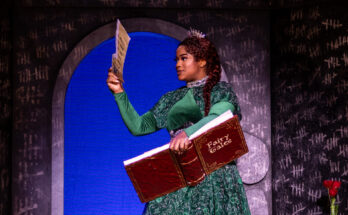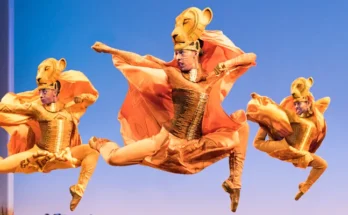How much do you know about The Fox Theatre? Encore Atlanta takes an in-depth look at the history and heritage of this amazing cultural icon.
In 1925, the Yaarab Temple of Atlanta embarked on a building campaign to raise $1 million. Contributors were promised a building that could accommodate 7,500 along with private quarters for the Shriners, such as several club and lounge rooms, a reading room and library, card room, soundproof practice rooms, storage, kitchen facilities, offices and more. They reached their fund-raising goal in less than a month.
In 1927, a design competition for the mosque was conducted, and the winner was local architectural firm Marye (pronounced Marie), Alger and Vinour, that cleverly ex-pounded upon the Shriners’ Middle Eastern theme with a dramatic, over-the-top interpretation of a mosque.
The resulting design reflected French architect Olliver Vinour’s genius in melding many styles — all of Middle Eastern influence — into one seamless, lavish, but not garish, design. From the outside, the ribboned-stripe brick walls with various arch styles — four-center, lancet, ogee and horseshoes — onion domes and minarets suggested a Moorish village. And although styles were kept separate, the interior featured elements from Egypt, Turkey, Morocco, Persia, Spain and Arabia.
By early 1928, the Shriners realized that a building they had originally estimated to build for $1.5 million was now looking like it was going to cost at least $2 million. (The final tab was around $2.75 million.)
At the same time, Atlanta was part of mogul William Fox’s grand plan to build a super movie palace empire across the country, and when he became aware of the mosque project, he approached the Shriners about leasing the auditorium. Although a little more restrained than the eye-popping Siamese/Burmese twins he was building in St. Louis and Detroit, the mosque’s proposed design fit in well with his lavish palace concept.
Fox entered into a 21-year lease of the theater auditorium with the Shriners, estimated to net them $3 million over the life of the lease. In turn, they kept office space and use of the auditorium at least six times yearly for their functions, events and rituals. The agreement, however, did nothing to solve the their immediate cash flow situation.
The Shriners plowed ahead, laying the cornerstone on June 14, 1928. Within six months, they ran out of money. They issued $1.5 million in bonds, and also decided that they needed to modify the design from a three-story building on the Peachtree Street side to a row of “temporary” stores.
William Fox made a few adjustments to the building’s construction, too, particularly the entrance and auditorium. Originally, guests were supposed to enter the mosque from Ponce de Leon Avenue, marked by a large, copper-clad onion dome covered in latticework. Fox wanted to use the 140-foot-long loggia accessed from Peachtree Street as the main entrance; his theory being that the long, covered arcade not only offered cover from the elements, but also made for an illusory magic carpet ride — surrounded by textured plaster reliefs, filigreed lamps, tile work and terrazzo flooring — to the exotica within. Upon entering the loggia, guests were entertained with posters trumpeting future shows and entertainment. Just above the loggia, Fox erected a huge marquee, flanked by a pair of minarets.
Less than two months after the stock market crash of 1929, and 18 months after ground was broken, the 250,000-square-foot, 5,000-seat Fox Theatre opened on December 25, 1929.
For more about the Fox’s history, look for The Fabulous Fox Theatre: The History of an Atlanta Icon, available at the gift kiosks in the lobby.



